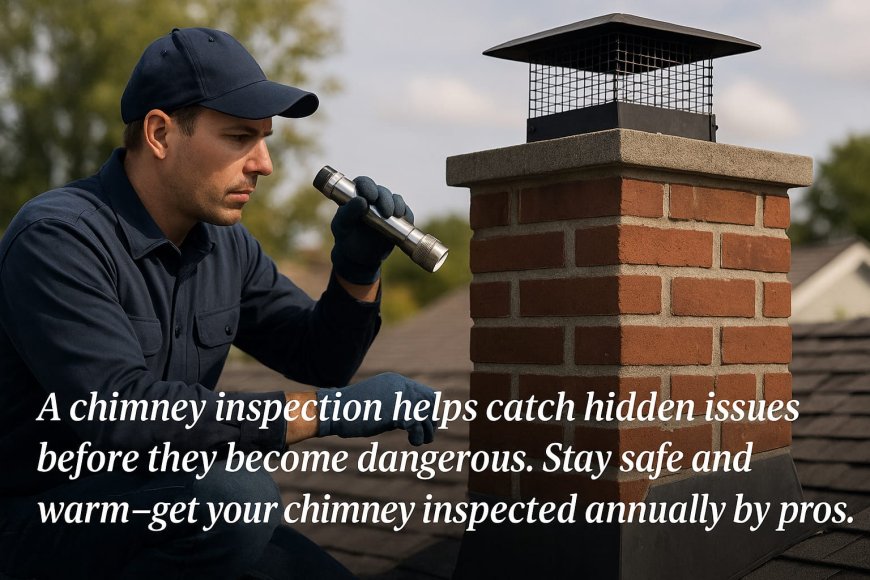When to Schedule a Chimney Inspection Before Cold Weather
Protect your home with a professional chimney inspection to detect creosote, cracks, or blockages before they become serious safety hazards.

As the air starts to shift and summers warmth gives way to crisp autumn breezes, its easy to start daydreaming about cozy firesides and hot chocolate. But before you stack logs and strike a match, theres something every fireplace owner should prioritize: achimney inspection. Ignoring this step could leave you facing not just a chilly home, but also bigger problems that could disrupt your winter comfort or even put your safety at risk. Thats why knowing when to schedule your chimney inspection can make all the difference as you prepare for the cold months ahead.
Why Timing Matters for Your Chimney Inspection
Imagine this: the first frosty night arrives and youre eager to light the fireplace. But what if your chimney is blocked, or theres hidden damage from last winter? By the time cold weather is here, lots of folks rush to book inspections and cleanings, and chimney specialists get swamped. Scheduling your chimney inspection earlythink late summer or the earliest days of autumnmeans youll avoid the seasonal rush and have plenty of time to fix any issues before you need to use the fireplace.
Waiting until the first cold snap isnt just inconvenient. It can also mean living with a fireplace you cant safely use, or worse, risking a fire or carbon monoxide leak. Early action gives you peace of mind and ensures your chimney is in top shape for the long winter ahead.
Signs Your Chimney Needs a Check-Up Before Winter
Not sure if your chimney needs attention? Here are a few telltale signs that its time to call in an expert:
- Theres a lingering smoky odor, even when the fireplace isnt burning.
- You notice bits of brick, tile, or soot in your fireplace or on the hearth.
- You hear animals (like birds or squirrels) moving inside the chimney, or see nests nearby.
- There are visible cracks, stains, or white patches on the chimneys exterior.
- Your fires just dont seem to burn as well as they used to, or smoke fills the room.
These hints are your chimneys way of saying it needs a little TLC before you start using it regularly. Even if everything looks fine on the outside, creosote (that sticky, flammable buildup from burning wood) can quietly line the inside of your flue. Thats why annual chimney sweeps andfireplace maintenanceare recommended by most professionals.
Best Months for a Chimney Inspection
To give you a clearer idea of when to act, heres a quick guide to the best times for a chimney inspection before the cold sets in:
| Month | Pros | Cons | Recommended? |
|---|---|---|---|
| JuneAugust | Flexible scheduling, plenty of availability, ample time for repairs | May not feel urgent yet | Yes |
| September | Still good availability, weather is mild for repairs | Start of busy season, some slots fill up | Yes |
| October | Final call before cold weather, catch last-minute issues | Very busy, longer wait times, rushed repairs possible | Maybe |
| NovemberDecember | Possible if you forgot earlier, but risky | High demand, possible delays, could miss early fireside season | No |
A safe and efficient fireplace begins with a clean, cared-for chimneydont let winter sneak up on you before making sure yours is ready.
What Happens During a Chimney Inspection?
If youve never had your chimney checked, you might wonder whats actually involved. Its not just a quick peek and a sweep. A good chimney technician will start by looking over both the inside and outside of your chimney. Theyll check for blockages, cracks, loose bricks, and creosote build-up. The flue, damper, and chimney cap all get a thorough once-over, too.
In some cases, a camera might be used to inspect the inside walls, especially if the chimney hasnt been checked in years. This way, youll get a clear idea of any trouble spots. The whole process usually takes less than an hour, but its worth every minute for the peace of mind it brings.
Tips for a Worry-Free Fireplace Season
Here are a few extra steps you can take to get the most out of your chimney inspection and enjoy a safe, warm winter:
- Keep a regular schedulemark your calendar for a yearly inspection.
- Burn only seasoned, dry wood to cut down on smoke and creosote buildup.
- Install a chimney cap to keep out rain, debris, and curious critters.
- Ask your technician for a written report so you know exactly what was checkedand what, if anything, needs fixing.
- Dont ignore small repairs; a little maintenance now can prevent big headaches later.
Conclusion: Dont WaitBook Your Chimney Inspection Early
As the days grow shorter and you start thinking about curling up by a crackling fire, dont let a neglected chimney spoil your winter plans. By scheduling yourchimney inspectionin the late summer or early fall, youll beat the rush, catch any problems before they get worse, and keep your fireplace ready for those chilly nights. Its a simple step that protects your home, your comfort, and your peace of mind all season long.
Read More: Chimney Sweep







































